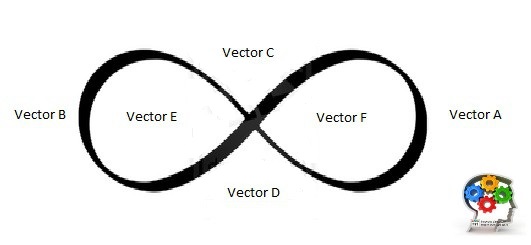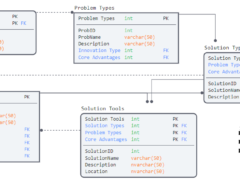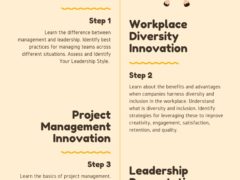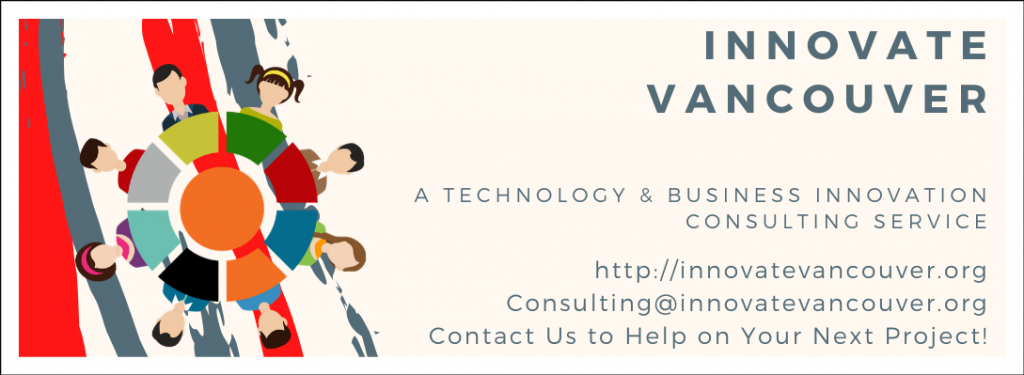Systems present with complexity and sticky problems. Identifying opportunities for innovation and growth begins with identifying capabilities and opportunities within the system. Each part of the system can impact other areas. It can ease change within these areas as well.
The impact of one action, or choice, on the system can become lost. This happens as the inter-dependencies increase. This can make it difficult to resolve issues in systems performance. The cause and effect relationships across the system are non-linear. The deterministic model that implies A-causes-B is no longer a luxury. Costs increase and quality decreases as the business team attempts to find a solution.
Systems inter-dependencies can introduce the following vectors that can be good or bad depending on the results:

- Increase: This can include an increase in profits, costs, risk, visibility, engagement, or relevance, etc.
- Decrease: This can include a decrease in quality, market share, value, or responsiveness, etc.
- Growth: This can include growth of the business size, industry competition, number of lawsuits, or customer demand, etc.
- Constraint: This can include constraints to business production capacity, learning, or evaluation, etc.
Defining a System
Understanding systems dynamics is crucial for developing Leadership Innovation. It helps identify the most effective paths to strengthen your teams and business. This also ensures customer satisfaction. There are many reverse engineered models for Leadership, Emotional Intelligence, and Innovation. The key is how to develop these competencies within a unique industry. Consider the specific environment and constraints as well.

There is a risk in using a Complete Off The Shelf (COTS) leadership, EI, or innovation model. It may not be a good fit for your business environment.
These reverse engineered models describe ideal performing constructs. They will likely represent characteristics and resources different from your team’s starting environments and resources. The strength of these models is that they can provide a vision. This is possible when they are properly aligned with the leadership team’s understanding of the business environment’s constraints. This alignment helps to both pursue and justify the pursuit of stretch goals.
A useful definition of systems has been offered by Tezpur University (n.d.):
“System: A system is an orderly grouping of interdependent components. These components are linked together according to a plan. The goal is to achieve a specific objective.”
“The study of system concepts has three basic implications:
1. A system must be designed to achieve a predetermined objective.
2. Interrelationships and interdependence must exist among the components.
3. The objectives of the organization as a whole have a higher priority than the objectives of its subsystems.”
Because systems are often poorly understood the results of corporate strategies and efforts become unpredictable. Using Complete Off The Shelf (COTS) models can help explain where strategy went amiss after-the-fact. However, they struggle to find what is suggested during the planning stage before the strategy is identified or implemented.
Nothing can replace the leadership, teams, and employees’ understanding of the business environment during the planning stage. Using this knowledge helps articulate strategies and processes. It is informed by a vision of ‘what can be’ in the future. These strategies and processes are uniquely tailored to each situation.
Template

The infinity symbol (above) is often used to graphically depict the interdependence of components within a system.
The change in one system part creates ripples throughout the system; some intended, and others unintended.
Understanding these inter-dependencies can create a significant competitive advantage for the business with the will to leverage these insights.
The above template can be used to evaluate the understood sequences within a system. Policies, procedures, and strategies are often implemented in stages or steps.
Identifying these steps, and their potential (or actual) negative consequences, is the first step towards identifying opportunities for Leadership Innovation.
Leadership Innovation seeks to leverage competencies for innovation and drive these throughout the business enterprise. Innovation does not occur sustainably without the leadership to and business infrastructure to support it.
The first blank template provides boxes to identify each step in your business process, policies, procedure, or strategy. With this journey mapping approach, the leadership team members gain a better understanding. They see how current efforts are performing. They also see how these efforts are impacting collateral system components.
Example 1: Ordering Online Tickets

The first completed example depicts the journey map for ordering airline tickets.
When reviewing this map, focus on the symptoms attached to each step. Think about what innovation opportunities exist to resolve that symptom?
Example 2: Applying for Government Benefits

The second completed example depicts the journeys map for applying for government benefits.
When reviewing this map, focus on the symptoms attached to each step. Think about what innovation opportunities exist to resolve that symptom.
Example 3: Referral for Services

The third completed example depicts the journey map for receiving a referral for services.
When reviewing this map, focus on the symptoms attached to each step. Think about what innovation opportunities exist to resolve that symptom.
Example 4: Reporting a Traffice Accident

The fourth completed example depicts the journey map for reporting a traffic accident.
When reviewing this map, focus on the symptoms attached to each step. Consider what innovation opportunities exist to resolve those symptoms.
When reviewing these examples what interdependencies would you emphasize? What solutions would you introduce first?
There is no one-size-fits-all suggestion for supporting Leadership Innovation or resolving conflicts between interdependent systems components.
The template above is going to be the most useful when representatives from throughout the supply chain are included. It will also be most effective in the discussion. Interventions can include:
- Social
- Technological
- Materials
- Human Resources
- Strategic
- Values/ Vision
- Customers
- Information/ Knowledge
- Training
- Financial/ Revenue/ Costs
An Essential Step for Corporate Strategy
Innovation drives what goals are identified in the financial plan. The goals are quantified and translated into financial terms. Business reporting then seeks to evaluate the implementation and thus success of the strategy. Strategy seeks to achieve the innovation goals. The process, strategies, and resources used to realize these innovative products or services require a firm operations foundation. This foundation must align with the company’s competitive advantages. A lack of integration almost guarantees the company’s competitive advantages (and thus customers, revenue, etc.) will be lost.
The integrative management approach must harness innovation. It should avoid the pitfalls of the static strategic plan in an ever-changing and intricately interdependent global economy. It must also include an ongoing appraisal of the company’s key business drivers. Sustaining the company’s competitive advantage requires an integrated working structure. This structure supports the allocation, use, and efficient leveraging of the company’s competitive assets. It also includes resources and technologies.
Once the key business drivers have been identified, the company makes a decision. This decision depends on their size, ability, and resources. They choose whether to insource or outsource, either in part or in full. Ideally, the company has internal expertise in their industry’s key drivers. However, it is recognized that startups, and companies entering new or high-risk ventures, may prefer to outsource. These companies might be unsure if they want to fully commit to the new market niche.
If the company is unable to adequately address a key business driver, they have two options. For example, engineering high tech aircraft engines for military applications in their chosen industry. They can outsource the specific part. This is feasible if most of a specific project can be delivered internally. This strategy allows them to address the key business drivers. Alternatively, they can choose to not pursue this particular industry niche altogether. This concern is particularly salient in new industries or during times of mergers or acquisitions. Key business drivers still lack clear specifications. Areas of ability that differentiate leaders from followers are not yet specified clearly.
By identifying the core drivers of your systems, you can increase efficiency and quality. These improvements can be achieved in time, cost, and scope (for further review consult the Project Management constraints model). The value chain in each industry will differ. For example, using Michael Porter’s Value Chain Model, this may include human resources. It may also include production, staffing, transportation & logistics, technology, marketing & sales, infrastructure, and services.
Efficiencies in time, cost, and scope are often produced in the not-for-profit sector through various strategies. These include job sharing and job rotation. Team building and leadership development are also key. Other strategies involve acquisition of service lines and/or contracts. Increasing staff retention, regular plan and performance reviews aid efficiency too. Metrics-driven service evaluations are conducted. Monthly and quarterly stakeholder meetings are important. Partnerships and outsourcing play a role as well. Recently, there is a move towards a for-profit planning and oversight methodology.
The challenges faced by the not-for-profit sector in integrating operations with the company’s competitive strategy are significant. I’m considering the ability to leverage the strategies of advanced competitors. This includes both resources and technologies in the same and different industries. Dan Pallotta aptly describes these challenges in a Ted Talks video: “The way we think about charity is dead wrong.”
Obstacles and risks to innovation initiatives must be accurately identified and evaluated. Then it is necessary to address these challenges. Then the company’s operations and competitive advantages (assets, strategies, and technologies) should be aligned and integrated. This includes the alignment of the company’s infrastructure. It also covers the reporting hierarchy or organizational chart. Job descriptions and compensation schedules are included. Data collection assets and resources are part of this as well. Competitive strategies and assets, along with mission and vision statements, complete the alignment.
Travis Barker, MPA GCPM
Innovate Vancouver is a Technology and Business Information Consulting Service (TBICS) located in Vancouver, BC. Contact Innovate Vancouver to help with your new project.




